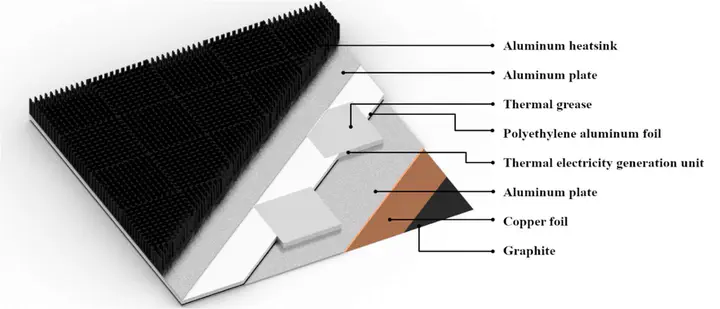An experiment on full-day power generation building fabric component for zero-energy buildings
 Image credit: [Jingming Li]
Image credit: [Jingming Li]Abstract
Thermal electricity generation (TEG) is a potential method to utilize energy emitted from the built environment. This work presents a prototype of the low-cost full-day power generation solar building component, which can be integrated as the building fabric or as a part of the solar panels. The size of the prototype is 0.04 m2. The overall cost is less than 25 USD. The prototype is tested in various environments to validate its performance. The first experiment tests its performance under the radiation of a high-temperature source, the prototype can generate the highest voltage of 0.8 V. In onsite experiments, it can reach a maximum value of 10 mW/m2 under sunlight. It can also work at night depending on the thermal radiation of the environment. It can also be used in different weather; the performance is even better than the nighttime. The experiments indicate that radiation heat transfer has a stronger influence on energy conversion than the convective heat transfer. The relative humidity has a certain influence on its performance, but there is no obvious effect of radiation heat transfer. Although the prototype has great potential, there are still limitations, and this article also discusses the problems. Meanwhile, this article also points out possible directions for improving design in the future. The results in this article might be helpful for zero-energy buildings and low-carbon buildings.